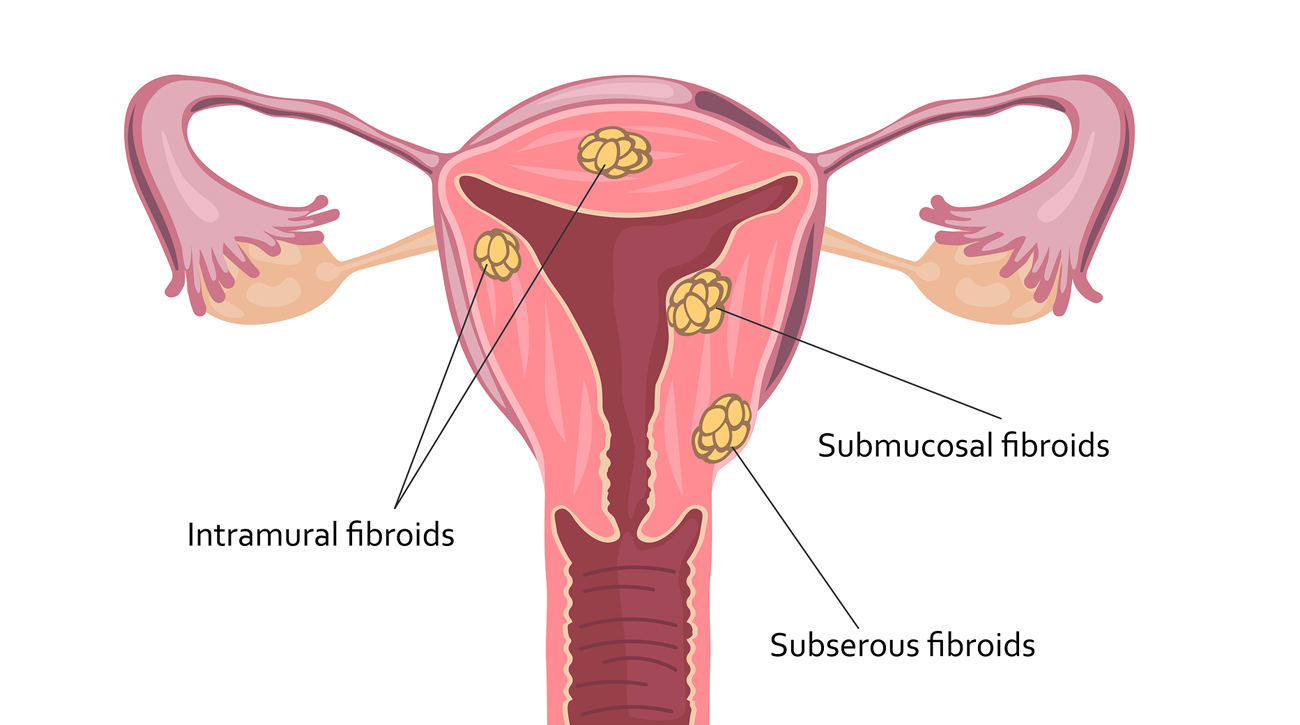WASHINGTON, DC (Nov. 15, 2018)—A pilot study published in the journal Fertility and Sterility suggests that exposure to certain harmful chemicals called phthalates may lead to an increased burden of fibroids, uterine tumors that can cause heavy bleeding, pain, infertility, and other serious reproductive problems.
“Everyone, every day is exposed to chemicals called phthalates and even at low levels they can have an impact on the human body,” said lead author of the study Ami Zota, ScD, MS, an assistant professor of environmental and occupational health at the George Washington University (GW) Milken Institute School of Public Health (Milken Institute SPH). “This preliminary study suggests a link between certain kinds of phthalates and burdensome fibroid tumors.”
Phthalates are harmful chemicals found in cosmetics, fast food and other common household items. These chemicals are linked to a wide range of health problems in men, women, and children, including pregnancy complications, infertility, and obesity.
Zota and her colleagues conducted this pilot study on 57 pre-menopausal women undergoing surgical treatment for fibroids, including a hysterectomy. Fibroids are non-cancerous tumors but they can grow to be very large—as big as a baseball in some cases. Most of the women in this study were black, overweight or obese and college educated.
The team analyzed urine samples taken from the women and found that 90 percent had exposures to most of the phthalates in the study.
This study suggests that the higher the exposure to phthalates, the greater the chance that women had larger fibroids. For example, the team found that a doubling in a phthalate called DEHP was associated with a 33 percent increase in uterine volume, which is caused by very large tumors or clusters of fibroids.
Phthalates can leach out of consumer items and then can be ingested, inhaled or absorbed through the skin. Previous studies suggest these chemicals, which act like hormones in the body, may spur uterine cells to proliferate and thus form fibroids, including fast-growing tumors.
Fibroids cost the United States an estimated $34 billion in lost productivity and medical costs each year. For reasons that are not well understood, black women run a greater risk of developing fibroids.
In 2017, Zota and a colleague wrote a commentary in Obstetrics and Gynecology that showed that black women and other minorities were exposed to higher levels of phthalates, perhaps because beauty products heavily marketed to minorities contain more of these chemicals.
Additional research needs to solidify the connection between phthalates and fibroids, especially for black women, Zota says. If researchers can confirm the link, then they might be able to find ways to lower exposure to phthalates and thus prevent related health problems, including the development of painful or large fibroids, she said.
The study, “Phthalates Exposure and Uterine Fibroid Burden among Women Undergoing Surgical Treatment for Fibroids: A Preliminary Study,” appeared November 15 in the journal Fertility and Sterility.
In addition to Zota, Gaby Moawad, MD, an associate professor of obstetrics and gynecology and Cherie Marfori, MD, an assistant professor of obstetrics and gynecology at the GW School of Medicine & Health Sciences served as co-authors on the paper.
A commentary published in the same journal says the study is “an example of research that can move the field forward by identifying plausible modifiable exposures that warrant further investigation in larger cohorts.” The author of the commentary, Quaker E. Harmon, MD, PhD, at the National Institute of Environmental Sciences, goes on to say: “Fibroids may be difficult to study, but rigorous and innovative research has the potential to mitigate the significant burden of this disease.”


